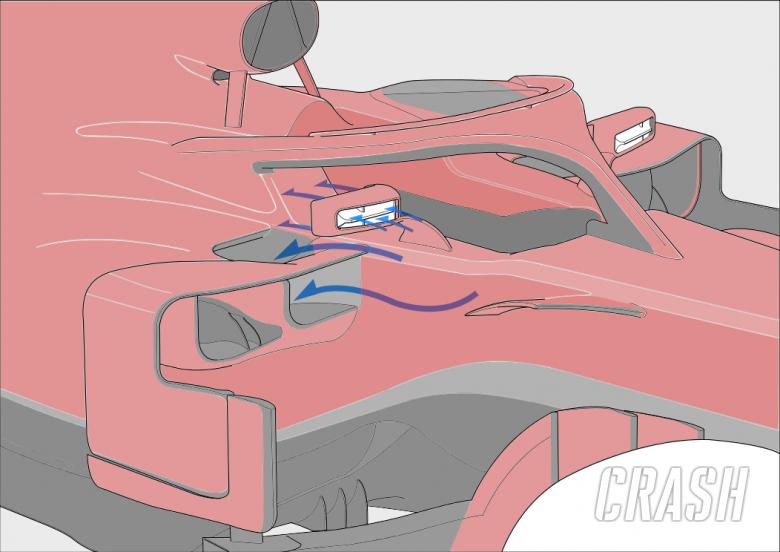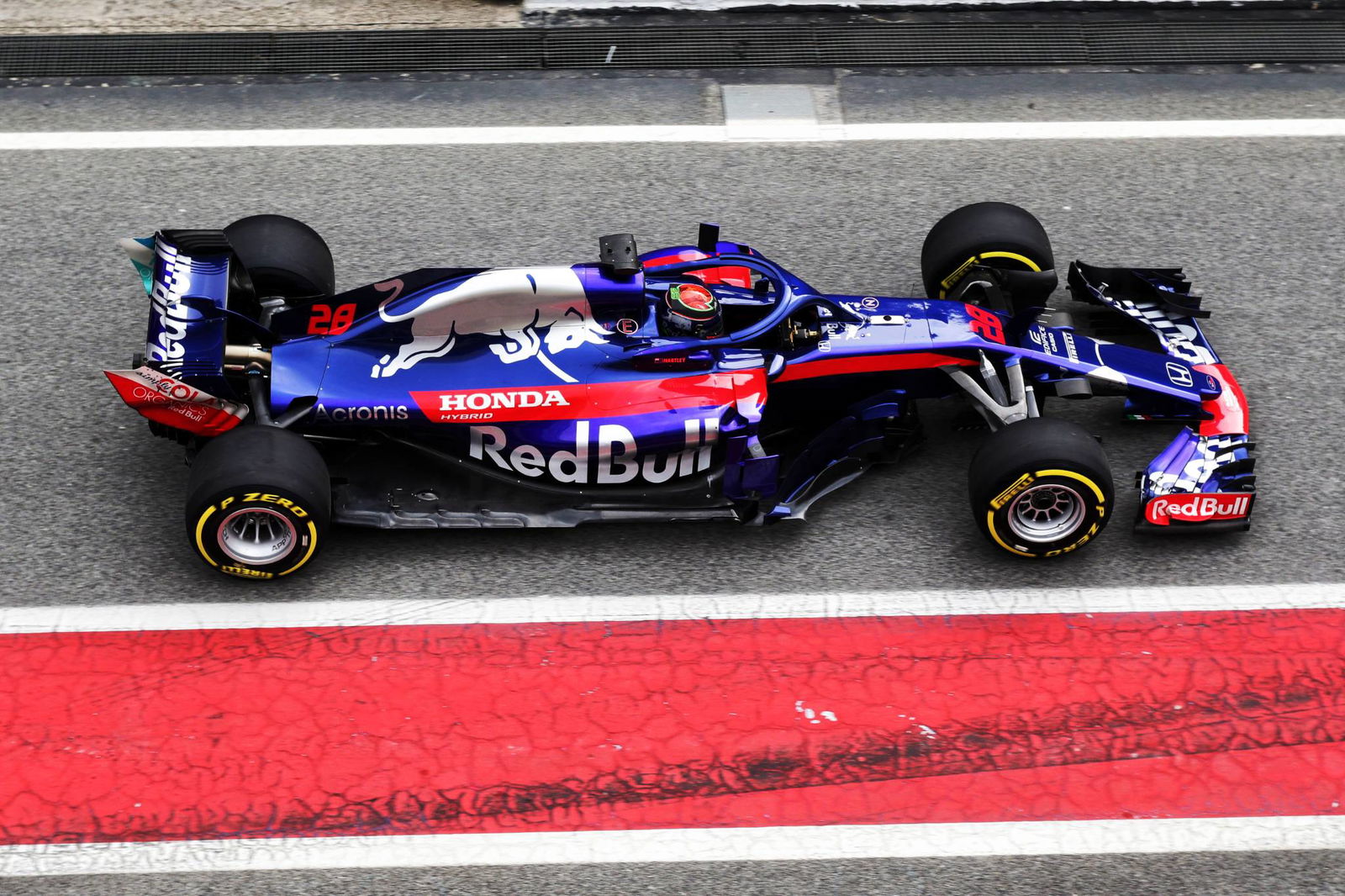Technical: Who's winning the Mercedes v Ferrari F1 development battle?
Just four days of testing down and it would be fair to conclude that 2018 looks set to at the very least be another tussle between last year’s title contenders, Mercedes and Ferrari.
Although the Silver Arrows ended the year victorious, the Scuderia has not been forced to take a different approach with its new SF71H car, as it perhaps would have in years gone by. Likewise with Mercedes, the W09 is very much an evolution of its championship winner, despite being trounced by its opposite number under particular circumstances.

Just four days of testing down and it would be fair to conclude that 2018 looks set to at the very least be another tussle between last year’s title contenders, Mercedes and Ferrari.
Although the Silver Arrows ended the year victorious, the Scuderia has not been forced to take a different approach with its new SF71H car, as it perhaps would have in years gone by. Likewise with Mercedes, the W09 is very much an evolution of its championship winner, despite being trounced by its opposite number under particular circumstances.
After a more thorough inspection of both cars during the first week of testing, a few interesting observations can be noted, starting with their similarities. Mercedes has continued to design its car around a very long wheelbase, which is exactly the same on the W09 as it was on the W08 according to James Allison. Ferrari has decided to follow suit, increasing its wheelbase slightly but not to quite the extreme that Mercedes has.
The wheelbase has seen a gradual increase since aerodynamics were introduced into F1, and the recent extensions have been made for the same reason: it provides more room to manage the airflow over the car. There is a weight penalty in doing this but the cars at the moment are so heavy that, with the current power unit regulations and added weight of the Halo, the extra bulk is by proportion less of an influence than precious aerodynamic gains. The widening of the cars from 1,800 to 2,000 mm in 2017 also promoted this geometry change, as the proportions of the car would only be altered slightly over the outgoing generation and thus have less of an impact on tighter circuits.
The two teams have also converged on the design of the airbox. Traditionally the airbox inlet above the driver’s head has been kept very small, accommodating only the intake for the engine. This minimises frontal area to reduce drag and provides clean air to the rear wing behind. But with the additional coolers required for the turbocharged hybrid system in a modern F1 car, Mercedes became one of the first teams to relocate radiators to the centreline of the car and provide them with air from around the roll hoop.
Over recent years it has become more common to widen the airbox and cram as many inlets as possible in that area to reduce the size of the sidepods, which contain the largest radiators and a variety of electronics boxes. The obstruction of the Halo has also made the airbox design more challenging, so slightly higher and even wider solutions are mostly favoured this year.
Using the roll hoop area in this way allows the teams to dramatically reduce the size of the sidepods, making it easier to divert high energy airflow towards the floor and over the top of the diffuser at the rear. Both Ferrari and Mercedes have been working hard to further reduce sidepod volume, and it is in this key area on the car where we see the two teams diverge.

As expected, we have seen plenty of teams copy the Ferrari sidepod concept from last year – a clever interpretation of the rules that hadn’t been exploited before but made a substantial impact alongside the other regulation changes. The front of the sidepods conceal two spars mounted perpendicularly to the chassis side. These are known as Side Impact Protection Structures (SIPS), a standard safety component developed by Red Bull. There is a relative amount of freedom regarding their vertical position, which Ferrari exploited by lowering the upper spar to create a prominent undercut in the bodywork. A wide but narrow inlet is sat behind and above the spar, with an additional inlet made into the bodywork above to help feed the radiators within.
Ferrari has furthered the idea for 2018, condensing the narrow inlet into a tiny orifice and opening up the intake on top of the bodywork to compensate. The result is a narrower waistline and even more room for turning vanes and baffles mounted to the sidepod shoulder, designed to protect the air passing over from the front tyre’s turbulent wake.
By contrast, Mercedes has stuck with a more conventional approach of using just one inlet, not cloaked by turning vanes. While not as aggressive, it certainly looks cleaner, and by having the inlet between the SIPS, it is able to install a horizontal vane on top of the sidepod that turns air down towards the floor. The W09 is not as slim around the hips as the SF71H, but Mercedes’ method works in conjunction with a different bargeboard and front wing setup upstream. This area of the car could prove to be a key battleground as the season progresses.
It may be early days in the development race, but both cars do have subtle tricks up their sleeves too. While these won’t define which is the best car overall, they add to why they are perhaps the fastest pair on the grid.
Wing mirror pods have received a great deal of attention over the past 12 months, and for good reason. They are there by regulation, but they act as a bluff body against the air and generate a wake behind them which disrupts the flow over the sidepod. Clearly the recent rule changes have sparked a creative lease of life within the teams, who are now coming up with more extravagant pod and stalk designs to make the mirror’s wake work more in their favour.
Ferrari has taken things a step further in 2018 by opening up the front of the mirror and filling the hollow inside with a small horizontal splitter. It is unclear whether the inlet is vented off somewhere within the car or, more likely, for wake management, passing through thin slots either side of the mirror behind. So far we haven’t had enough detailed shots of it to tell.
Meanwhile at Mercedes, its raised upper wishbone design from 2017 has been carried over, which integrates nicely at the chassis alongside a tidied version of the caped nose they introduced in Spain last year. This design is aerodynamically advantageous in that it raises obstructions to the airflow (the wishbones) from the front wing’s wake and the lower part of the bargeboards. It is also not easy to replicate without considering the suspension loads, requiring a rework of the upright and the chassis to accommodate this design. Only two other teams have got this on their car: Toro Rosso and, for this year, Sauber.

Both teams appear to have made good strides, continuing to broaden their concepts from before while converging on similar solutions in some areas. Underneath the skin is where the titles could be decided, though – the power unit. Mercedes in particular is rumoured to have made significant changes to what is already a masterpiece in engineering. Limited to just three for 2018, it could boil down to who has made the best trade-off between power, reliability and weight.
With little opportunity to introduce changes to the powertrain during the season, this could pose a situation where one team will have to out-develop the other on the chassis side to counter any shortcomings.
2018 is certainly a tasty technical prospect.

